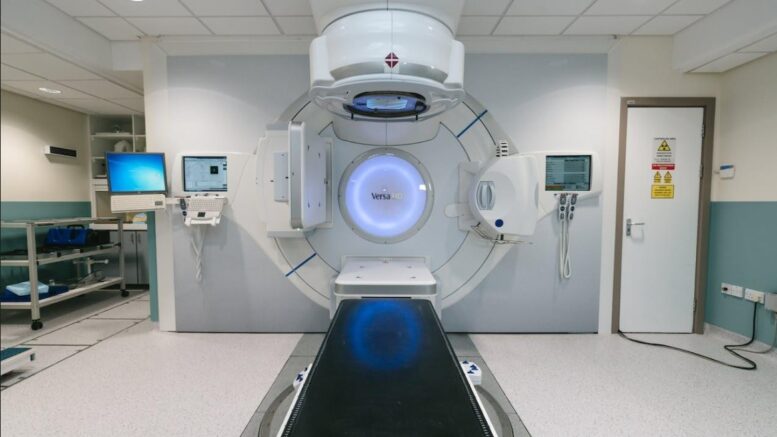With the introduction of minimally invasive procedures, the treatment of cancer has undergone a paradigm change in the ever-changing field of medical advancements. The days of enduring lengthy recuperation periods and invasive surgery to combat cancer are long gone. Modern techniques allow for the less invasive shrinkage of malignant tumors, providing patients with a more streamlined and effective healing process.
1. Image-Guided Ablation: Precision in Targeting Cancer Cells
At the vanguard of minimally invasive therapies, image-guided ablation offers a degree of accuracy in targeting cancer cells that have never been seen before. This method includes directing the administration of therapeutic medicines straight to the tumor location using sophisticated imaging technologies, such as ultrasonography, CT scans, or MRIs. Common techniques include cryoablation, which uses very high temperatures to kill cancer cells, and utilizing sophisticated RFA machines. Image-guided ablation is a beautiful procedure because it may precisely target the tumor while leaving healthy surrounding tissues unharmed. This strategy greatly lessens the stress connected with conventional cancer therapies by limiting collateral damage, enabling a speedier recovery and better patient results.
2. Laser Therapy: Non-Invasive Precision at Its Finest
A very accurate, non-invasive technique for reducing malignant tumors is laser treatment. With this method, malignancies may be precisely destroyed or reduced in size thanks to the strength of concentrated laser beams. A laser fiber is placed into or close to the tumor during the treatment, guided by imaging methods like MRI or endoscopy. Next, the cancer cells have direct exposure to laser radiation, which causes them to degrade or be absorbed by the body. Tumors that are in sensitive or difficult-to-reach locations benefit most from laser treatment. Its non-invasiveness makes it a game-changing alternative for certain kinds of tumors since it results in less trauma, less scarring, and quicker recovery durations.
3. Nanoparticle-Mediated Drug Delivery: Precision on a Molecular Scale
A novel technique to treat cancer is nanoparticle-mediated medication delivery, which uses nanotechnology to target tumors at the molecular level. This method uses nanoparticles that can be designed to seek out and gather cancer cells to contain therapeutic medicines. These nanoparticles deliver the medications to the tumor location, enabling a highly focused and localized therapeutic response. Because of its accuracy, less harm is done to healthy tissues, which lessens the negative consequences of systemic chemotherapy. An important development in the battle against cancer is the capacity to deliver therapeutic payloads directly to cancer cells, improving treatment effectiveness while reducing physical harm to the patient.
4. High-Intensity Focused Ultrasound (HIFU): Sonic Waves Against Cancer
A novel method called High-Intensity Focused Ultrasound (HIFU) uses concentrated sound waves to target and reduce malignant tumors. Using ultrasonic radiation to create heat at the exact site of the tumor, this non-invasive method causes thermal ablation, which kills cancer cells. The brilliance of HIFU is its capacity to access tumors buried deep without requiring surgical incisions. Accurate targeting is ensured by using imaging tools such as MRI to guide the treatment. With fewer side effects and a shorter recovery time than radiation treatment, HIFU presents a strong substitute for conventional surgery. HIFU is a highly accurate and less invasive method of treating cancer by using the power of sound waves.
5. Electroporation: Opening Cellular Doors to Treatment
Through the temporary opening of cancer cells’ cell membranes, a revolutionary approach called electroporation improves the transport of therapeutic medicines directly into cancer cells. In this process, the tumor site is exposed to electrical pulses, which cause transient holes in the cell walls. This makes cancer cells more receptive to treatment by enabling higher absorption of chemotherapeutic agents. Particularly useful in situations when conventional chemotherapy may not be as successful as desired is electroporation. By optimizing the effects of therapeutic medicines on cancer cells, electroporation reduces the need for a dose, which lessens the patient’s body’s total systemic impact. This focused strategy not only improves the effectiveness of treatment but also helps make cancer therapy less distressing for patients.
Conclusion
The development of less invasive procedures is bringing about a radical change in the therapeutic landscape for cancer. These cutting-edge methods, which range from nanoparticle-mediated medication delivery to image-guided ablation, provide accurate and focused ways to reduce malignant tumors. The field of minimally invasive cancer therapies is expected to see even more exciting advancements in the future as technology progresses. Accept the new direction that medical research is taking, where the goal is to treat cancer as precisely as possible while causing the least amount of harm to the patient.
